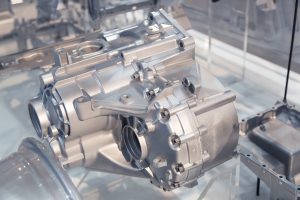Casting
 Metal casting is a process that has been used for centuries to create a wide range of metal products, from simple tools and household items to complex machinery and infrastructure components. Despite the advances in modern technology, metal casting remains an essential manufacturing method that provides several unique benefits over other production techniques.
Metal casting is a process that has been used for centuries to create a wide range of metal products, from simple tools and household items to complex machinery and infrastructure components. Despite the advances in modern technology, metal casting remains an essential manufacturing method that provides several unique benefits over other production techniques.
Metal casting is a method of shaping molten metal into a mold of the desired shape. The metal is heated until it reaches its melting point and is then poured into the mold. Once the metal has cooled and solidified, the mold is broken to reveal the finished product.
Types of Metal Casting Processes
There are several types of metal casting processes, each with its own unique benefits and limitations. The most common types include:
-
Sand casting: This process involves using a mold made of sand and clay. Sand casting is a relatively inexpensive and versatile method that can be used to produce a wide range of shapes and sizes.
-
Die casting: This process involves using a metal mold, or die, to shape the molten metal. Die casting is a fast and efficient method that produces high-precision products with a smooth surface finish.
-
Investment casting: This process involves using a ceramic mold to create intricate and detailed shapes. Investment casting is a more expensive method, but it is ideal for producing complex and high-precision parts.
The Metal Casting Process: Step by Step
The metal casting process can be broken down into the following steps:
-
Design and Prototype Creation: The first step in metal casting is to create a design for the product and create a prototype to test its feasibility.
-
Mold Making: The next step is to create a mold that will be used to shape the molten metal. This can be done using a variety of materials, including sand, clay, or ceramic.
-
Melting and Pouring: The metal is melted and then poured into the mold. The mold is then allowed to cool and solidify, resulting in a solid metal product.
-
Finishing: Once the metal has solidified, the mold is broken to reveal the finished product. Additional finishing processes, such as machining or polishing, may be necessary to achieve the desired shape and surface finish.
Considerations for Metal Casting
While metal casting offers many benefits, there are several considerations that should be taken into account when choosing this method for your production needs. Some of these include:
-
Automotive: Metal casting is widely used in the automotive industry for the production of engine components, transmission parts, and other crucial components.
-
Construction: Metal casting is used in the construction industry for the production of building components such as structural steel, aluminum window frames, and cast iron pipes.
-
Machinery: Metal casting is used in the machinery industry for the production of machine components, such as gears, bearings, and shafts.
-
Art and Sculpture: Metal casting is also used in the art and sculpture industries, allowing artists and sculptors to create intricate and complex designs in metal.
Are you looking for Castings?
Submit an RFQ now!
Custom Manufacturing
